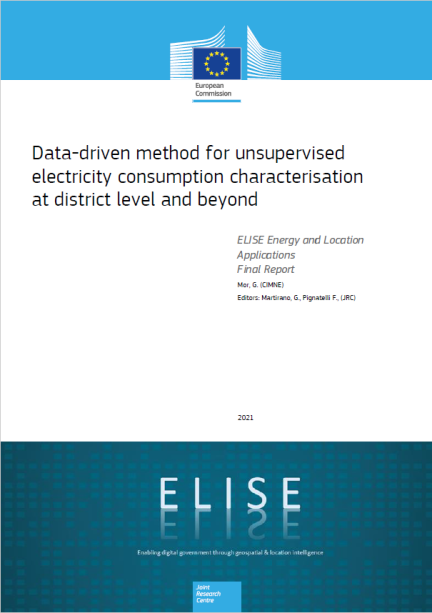Final report of the ELISE Energy & Location Applications Use case "Scale-up methodologies".
Enhancing energy efficiency has become a priority for the European Union. Several policies and initiatives aim to improve the energy performance of buildings and collect data of sufficient quality on the effect of energy efficiency policies on building stocks across Europe. Knowledge about the characteristics of the building stock and the usage of these buildings' occupants is essential for defining and assessing strategies for energy savings.Nowadays, dynamic measured data from the Advanced Metering Infrastructure (AMI), especially in electricity consumption, combined with location-based data, like weather, cadastre, social or economic conditions, should be available for a significant part of the building stocks in Europe. Combinedly, this enormous set of data contains the characteristics of how buildings and their occupants consume energy.In this document, a bottom-up electricity characterisation methodology of the building stock at the local level is presented. It is based on the statistical analysis of aggregated energy consumption data, weather data, cadastre, and socioeconomic information. For validation purposes, the characterisation of the electricity consumption over Lleida (Spain) province is performed. The geographical aggregation level considered is the postal code (more detailed than LAU level 2, formerly NUTS level 5), due to it is the highest resolution available through the Spanish Distribution System Operators (DSOs) data portal. Besides, a web application to visualise the results of the characterisation has also been developed. The major novelty is the use of high-frequency consumption data from most consumers in each analysis area without considering any Building Energy Simulation (BES) model that considers performance or energy use assumptions. For this purpose, a data-driven technique is used to disaggregate consumption due to multiple components (heating, cooling, holiday and baseload). In addition, multiple Key Performance Indicators (KPIs) are derived from these components to obtain the characterisation results. The potential reuse of this methodology allows for a better understanding of the drivers of electricity use, with multiple applications for the public and private sectors.
How to cite this document: Mor, G., ELISE Energy and Location Applications: Data-driven method for unsupervised electricity consumption characterisation at district level and beyond – Final Report, Martirano, G., Pignatelli F. (eds.), Publications Office of the European Union, Luxembourg, 2021, ISBN 978-92-76-40553-5, doi:10.2760/362074, JRC124888.


